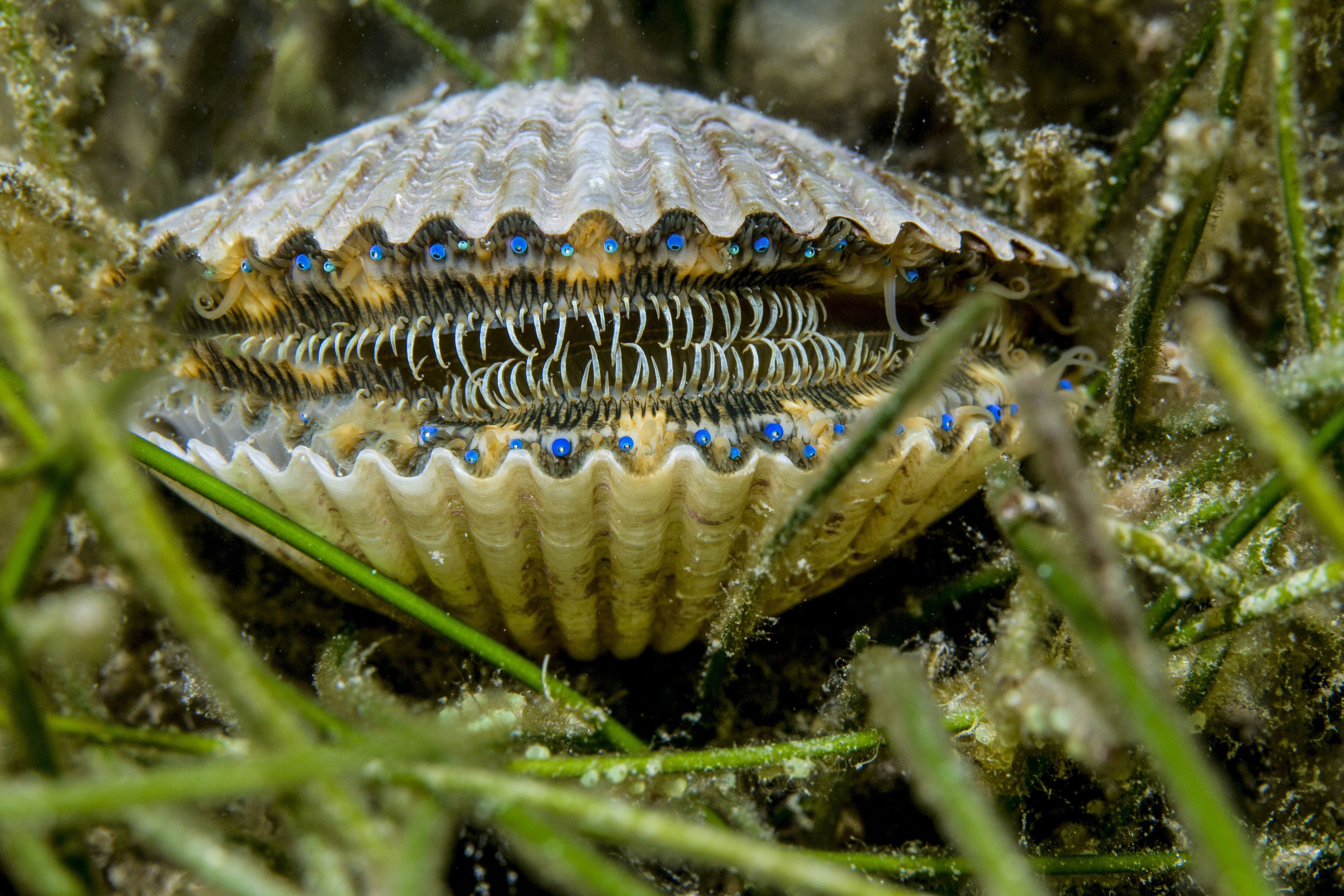Mollusc Has 200 Eyes Collectively Functioning Like a Telescope
Unless you are an avid scuba diver, when you think of scallops, you probably think of linguine and garlic more than oceans and shells. That’s because you only eat the muscle of the scallop: You never see them in context. And so… one of the most shocking things I just discovered is that scallops have eyes!
Not only do they have eyes, they have dozens of them along the edges of their shell opening. And that is not even the weird part, now what is, is that a new study has discovered that scallops, the so-called “Simply Mollusks” have 200 unusual eyes that have lenses which focus light on one or two retinas functioning wholly like a telescope.
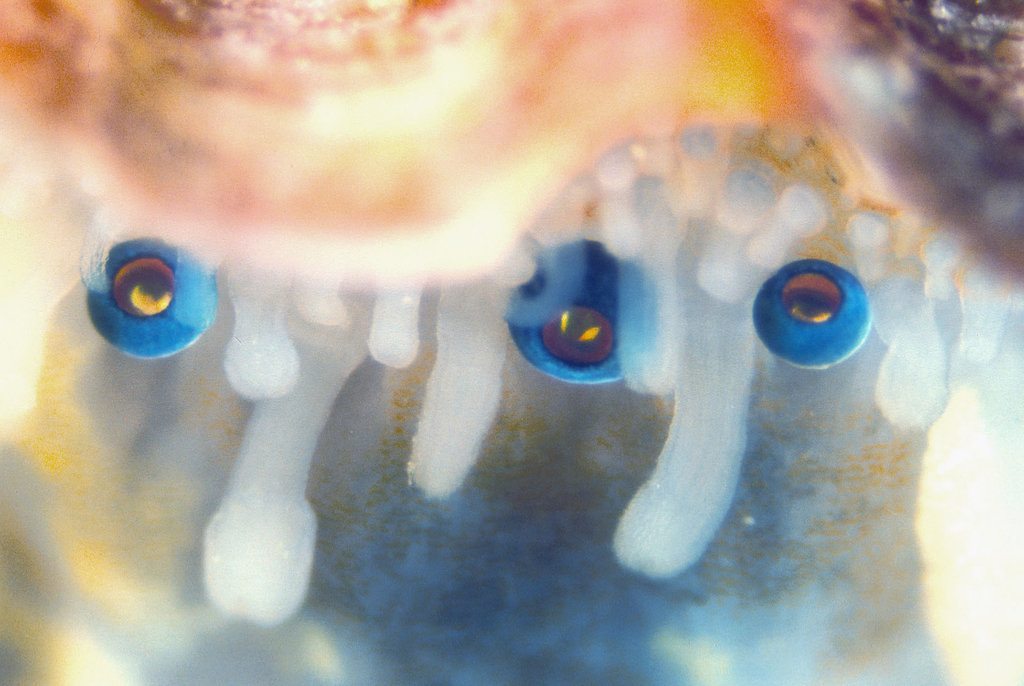
While some invertebrate eyes can sense only light and dark, scientists have long suspected that scallops can make out images, perhaps even recognising predators quickly enough to jet away to safety. But scallop eyes – each about the size of a poppy seed – are so tiny and delicate that scientists have struggled to understand how they work.
Now, a team of Israeli researchers has
had a look at the hidden sophistication of the scallop eye, thanks to powerful new microscopes.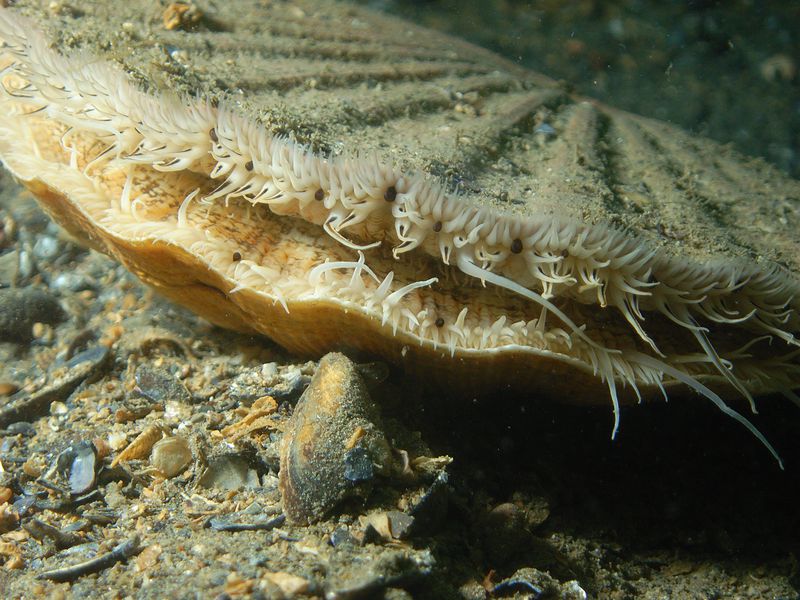
Biologists have known since the 1960s that these concave mirrors are made from crystals of guanine, a highly reflective material that can be seen in everything from fish scales to chameleon skin. Inside the eyes, the weirdness deepens. When light enters a human eye, it passes through a lens, which focuses it onto the retina—a layer of light-sensitive cells. When light enters a scallop eye, it passes through a lenslike structure, which … doesn’t seem to do anything. It then passes through two retinas, layered on top of each other. Finally, it hits a curved mirror at the back of the eye, which reflects it back onto the retinas. It’s this mirror, and not the lens, which focuses the incoming light, in much the same way that those in segmented telescopes do.
The scientists used cryo-electron microscopy to view the details of the scallops. Benjamin Palmer, a co-author of the study and a biologist at the Weizmann Institute of Science in Rehovot, Israel, said that the guanine crystals that develop in the scallop’s eye mirror are perfectly square. He described it as really weird, adding that it is the first time they have seen a perfect square.
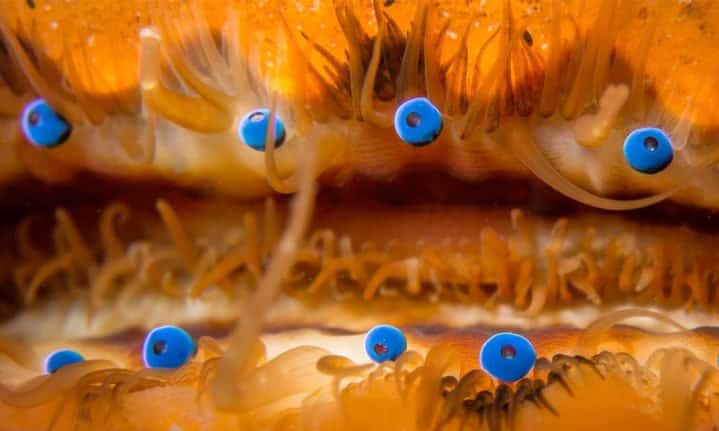
“From our ray tracing reconstructions, we estimate that they can form a blurry image of the shapes of objects,” Stephen Weiner of the Weizman Institute of Science and a co-author on the study says.
This places them closer to giant clams – which have hundreds of eyes – than smaller mollusks and mussels. See, the latter have none or only rudimentary light sensors to detect predators. (More advanced mollusks like octopuses have oddly human-like eyes.) But the structure of the eye of the scallop is seemingly entirely unique.
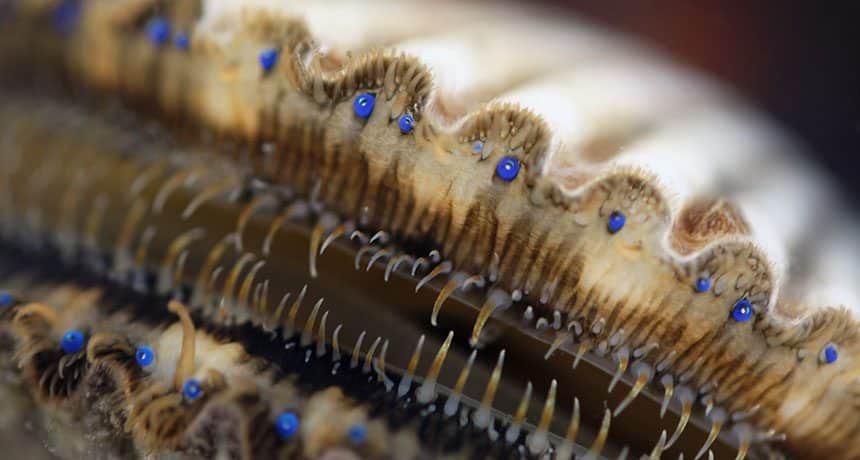
“Very few other mollusks have eyes and these resemble those in insects,” Weiner says. “So besides these unique eyes, the scallops are among the few, if not the only group of bivalves that can swim. Maybe there is a connection.” (Scallops swim by ejecting a stream of water and then flapping along in an irregular pattern. It’s as weird as it sounds.)
Guanine doesn’t form crystal shapes that evenly pack together in the lab. That means that, somehow, the scallop is controlling the crystallization process, Palmer says. The square crystals fit together edge-to-edge like bathroom tiles to form a smooth surface that minimizes image distortion.
A single layer of this guanine mosaic is transparent. The mirror consists of flat, square guanine crystals, each a millionth of a meter wide. They tessellate together into a chessboard-like grid. Between 20 and 30 of these grids then stack on top of each other, with a liquid-filled gap between them. And the layers are arranged so that the squares in each one lie directly beneath the squares in the one above. The crystals and the gaps between them are respectively 74 and 86 billionths of a meter thick, and these exacting distances mean that the mirror as a whole is great at reflecting blue-green light—the color that dominates the scallop’s underwater habitat.
And the scallop’s eye mirror isn’t shaped like a perfect hemisphere, the researchers found. Instead, the mirror has an unusual 3-D shape that allows the scallop to focus light on one of two retinas, depending on the angle of the incoming light. One retina is tuned to dimmer light coming from the peripheral vision; the other best captures movement in bright light.
Also, the mirror is not an inanimate structure within the eye. It’s a living thing. The square crystals grow inside the cells of the scallop’s eye, filling them up. It’s the cells that then tessellate together to form the layers. “The cells can’t be dead,” Lia Addadi from the Weizmann Institute of Science says, “or the whole thing would break apart.” So not only must the cells control the growth of the crystals inside them, but they also have to communicate with each other to arrange themselves just so.
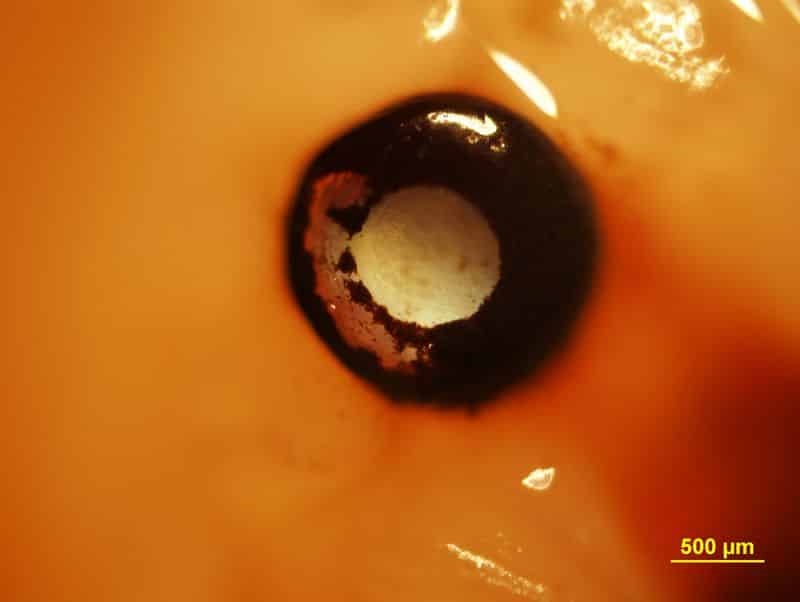
“Our work demonstrates the remarkable control the scallop exerts over the growth and arrangement of crystals to make a highly reflective mirror capable of forming functional images,” Dr. Palmer and colleagues said.
Just as the complex optics of other animals, like lobsters, have informed telescope design, these results may pave the way to the construction of novel bio-inspired optical devices for imaging and sensing applications. Dr. Palmer said that scallop eyes may provide inspirations for new inventions. There’s certainly precedent: NASA has built X-ray detectors to study black holes that mimic lobster eyes. Perhaps an artificial scallop eye could take pictures in dim seawater.


























